Inside Dolmabahçe Palace in Istanbul

The Dolmabahçe Palace is one of the most breathtaking royal palaces that ever spread across the world. The ceilings alone required a staggering 14 tons of gold for gilding. The palace stands on the European side of the Bosporus in Istanbul, Turkey, and reflects the architectural splendor of the 19th-century Ottoman Empire.
The palace was built between 1843 and 1856, creating an unreal building that occupies 45,000 square meters. Its grand design has 46 halls, six hammams (Turkish baths), 68 toilets, and 285 rooms. The pièce de résistance of the palace, the world's largest crystal chandelier, weighs 4.5 tons and illuminates the space with 750 lamps. Sultan Abdülmecid I commissioned this masterpiece as a replacement for its wooden equivalent.
The palace soon became the administrative hub of the Ottoman Empire. Its unique architecture brings together Baroque, Rococo, Neo-Classic and classical Ottoman art movements into an unparalleled masterpiece. Turkey's largest single-block palace today stands as a testament to an empire's demise and a republic's rise. Its lavish interiors can be walked through and its fascinating history can be felt by people during their Turkey tour.
A Walk Through History: From Empire to Republic
The stunning Dolmabahçe Palace started its trip through the years in 1843. Sultan Abdülmecid I ordered it to replace the medieval Topkapı Palace. He found the old palace outdated compared to European royal palaces. His decision revolutionized Ottoman architectural priorities toward Western styles.
Construction timeline and political context
Dolmabahçe Palace took thirteen years to complete from 1843 to 1856. Ottoman Armenian architects Garabet Amira Balyan and his son Nigoğos Balyan led the design. They created a palace in Baroque, Rococo, and Neoclassical styles. The exorbitant construction cost of the palace had a significant effect on the finance of the Ottoman Empire. The empire funded it through currency devaluation, mass printing of paper money, and foreign loans. These financial pressures led the empire to default on its public debt in 1875.
Use by Ottoman sultans and downfall of the empire
The imperial family moved from Topkapı Palace to their new European-style residence in 1856. Six Ottoman sultans used Dolmabahçe as their residence between 1856 and 1924. The palace became the main administrative headquarters of the Ottoman Empire. Many diplomatic meetings and political decisions that shaped the empire's final decades were held here.
Dolmabahçe witnessed the slow deterioration of the empire until its end in 1922. The new Republic of Turkey purchased the palace through a law that was passed on March 3, 1924.
Atatürk's residence in the palace
Mustafa Kemal Atatürk, Turkey's first president, used Dolmabahçe as his presidential palace whenever he came to Istanbul. His choice carried both practical and symbolic meaning - it symbolized Turkey's evolution from empire to modern state.
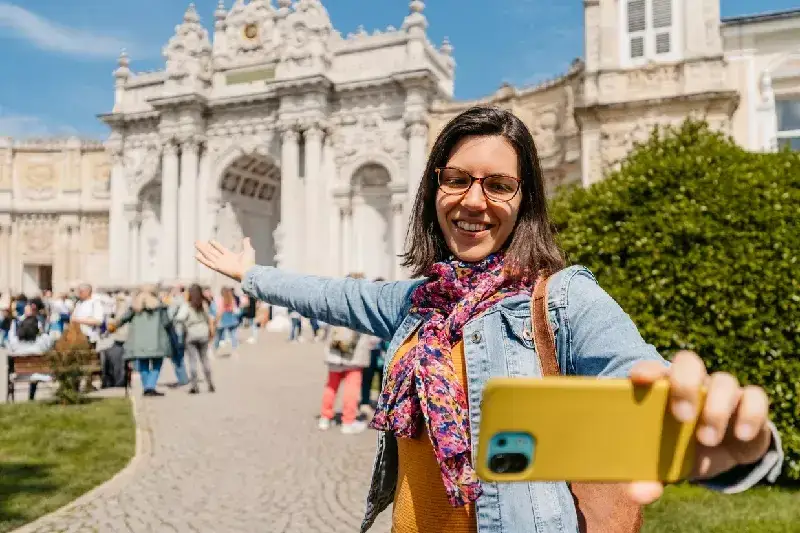
Exploring the Palace Design
Dolmabahçe Palace has an area of 15,000 square meters and consists of three distinct sections that served different purposes in the Ottoman imperial structure.
Selamlık: The public and administrative wing
The southern wing of the palace, Mabeyn-i Hümâyûn or Selamlık, served as the Ottoman Empire's public and administrative wing. It entertained high-level Ottoman officials, foreign dignitaries, and state visitors in this highly ornamented section. Visitors were accompanied by Palace protocol officers from the Medhal Hall, the main entrance. The middle floor had the stunning Ambassadors Chamber and Vizier Chamber that demonstrated the significance of diplomacy in 19th-century Ottoman statecraft. There was gold decoration, designs on the marble floors, and ornamented ceilings in all sections of the Selamlık.
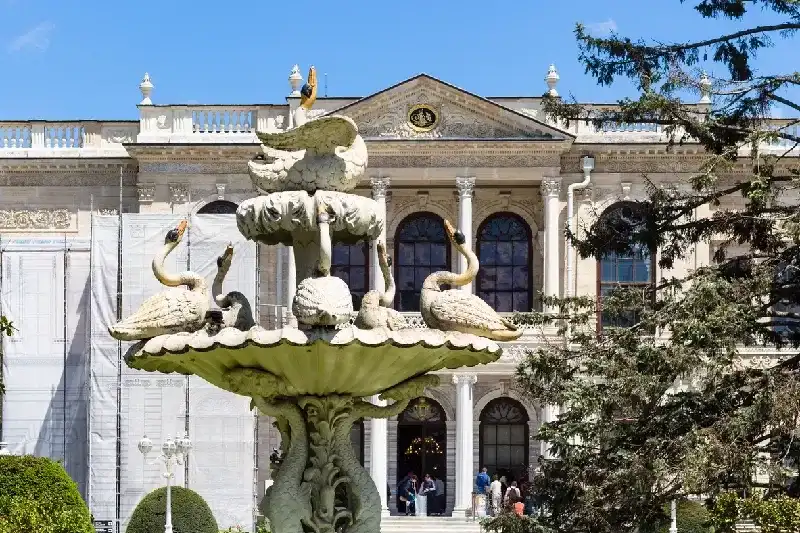
Customize Your Dream Vacation!
Get in touch with our local experts for an unforgettable journey.
Plan Your TripHarem: Private life of the royal family
The Imperial Harem occupied the northern wing and consisted of almost two-thirds of the palace. This private sanctuary contained eight interconnected apartments for the wives, favorites, and concubines of the sultan, as well as the apartment of the Queen Mother. The Blue Hall (Mavi Salon) hosted religious celebrations, and the Queen Mother received special guests in the Pink Hall (Pembe Salon). The interior decoration of the Harem was more cozy than that of the public areas, though no less luxurious.
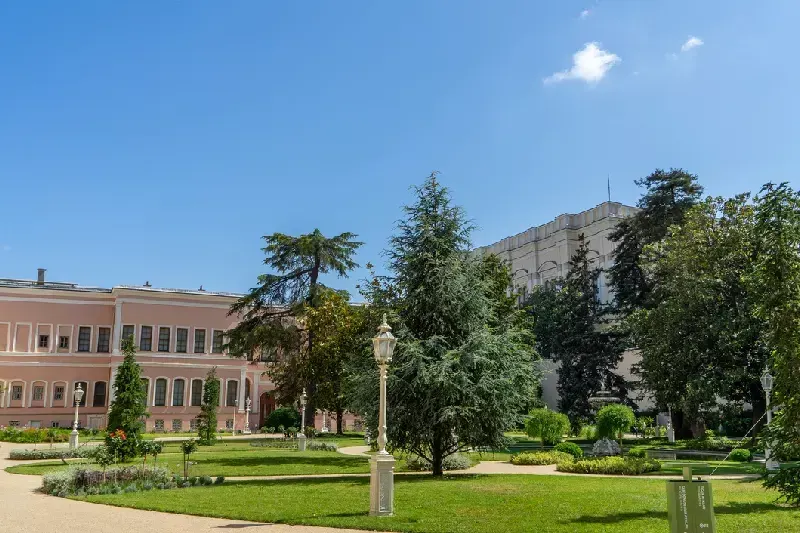
Absolutely, Dolmabahçe is one of Istanbul’s most magnificent landmarks. Visitors are awed by its lavish interiors, including the world’s largest Bohemian crystal chandelier, the famous crystal staircase, and opulent halls decorated in gold, silk, and marble.
Muayede Hall: The hub of ceremonies
Between them stands the grand Muayede Hall as the palace's ceremonial centerpiece. The huge hall measures 2,000 square meters beneath a 36-meter high dome atop 56 columns. The great hall witnessed coronations, religious celebrations, diplomatic receptions, and notably hosted the first Ottoman parliament session in 1877.
Inside the Opulence: Décor and Furnishings
Dolmabahçe Palace stands out among royal homes worldwide with its stunning decorative elements. Its interior halls reflect a degree of opulence that continues to leave people stunned even today, just as it would have in the past.
Crystal chandeliers and Baccarat staircase
Gold leaf covers the palace ceilings in an amazing display of fourteen tons, filling each room with a golden glow. The crystal pieces make Dolmabahçe so special. You will find the world's largest collection of Bohemian and Baccarat crystal chandeliers here. The most beautiful one is in the Ceremonial Hall - a gigantic 750-lamp Bohemian crystal chandelier weighing 4.5 tons.
The famous crystal staircase catches everyone's eye with its unique double horseshoe shape. This masterpiece combines Baccarat crystal, mahogany, and brass to form a stunning entrance as the visitors ascend to the higher levels.
Explore Turkey’s wonders and book your Turkey tour with Memphis Tours now!
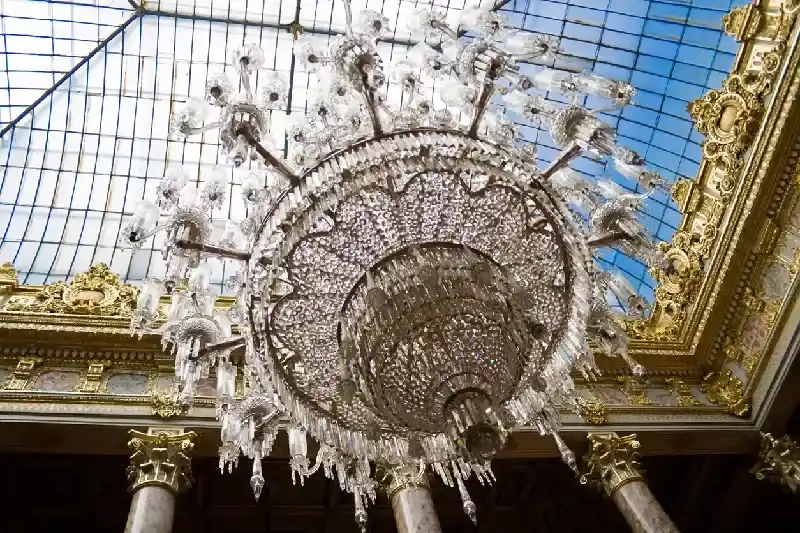
Hereke carpets and European furniture
The palace's floor decorations tell their own story. There are some intriguing Hereke carpets within the rooms, which include the world's largest Hereke carpet. This marvel occupies 124 square meters in the Ceremonial Hall. It was made by the Hereke Imperial Factory in 1902 by Sultan Abdülhamid II. The carpets have advanced patterns with very fine knots that allow for highly expressive designs.
Charles Séchan, who also adorned the Paris Opera, designed the palace interiors. He brought in elegant European furnishings, Petre Dure decoration, and Sèvres china. His labor created spaces equal to the most beautiful royal palaces of Europe.
Aivazovsky and other paintings
The palace's art collection adds grandeur to a whole new level with 202 oil paintings. The highlight includes 23 of Ivan Aivazovsky, who painted on behalf of the court on his trips to Istanbul. The collection contains paintings by famous European artists like Gustave Boulanger, Jean-Léon Gérôme, and Félix Ziem. Paintings by Turkish artists also feature prominently, with Osman Hamdi Bey, Halil Pasha, and Osman Nuri Pasha painting them. The combination of Turkish and Western art demonstrates the mutual respect Ottoman Empire has for both of them.
What to See Today at Istanbul Dolmabahce Palace
Dolmabahçe Palace welcomes visitors with attractions that go far beyond its magnificent main building. The palace grounds construct an unrivaled experience with exceptional structures throughout its expansive complex, making it a highlight to include in any Turkey tour package.
The Clock Tower and Dolmabahçe Mosque
The neo-baroque Dolmabahçe Clock Tower stands tall outside the palace. Sarkis Balyan, the court architect, built this between 1890 and 1895 during Sultan Abdülhamid II's reign. The four-sided and four-story tower is 27 meters in height. Mechanical clockmaker Jean-Paul Garnier's mechanical clock once crowned the tower, and staff had partially reworked it to electric in 1979.
The stunning Dolmabahçe Mosque has been situated next to the palace since its establishment in 1855. The stunning building was ordered by Sultan Abdülmecid's mother in 1852. The mosque's architecture harmoniously combines Ottoman, neo-baroque, and rococo styles. The structure had served as the Naval Museum between 1948 and 1961 prior to restoration to religious purposes.
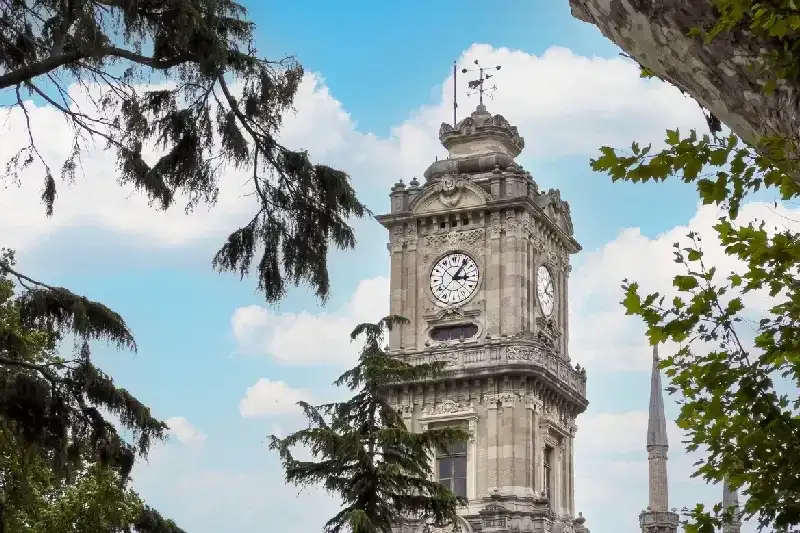
Absolutely, Dolmabahçe is one of Istanbul’s most magnificent landmarks. Visitors are awed by its lavish interiors, including the world’s largest Bohemian crystal chandelier, the famous crystal staircase, and opulent halls decorated in gold, silk, and marble.
While there’s no strict dress code, visitors should dress respectfully as with most cultural and historical sites. Modest attire is recommended; covering shoulders and knees is appreciated. Comfortable shoes are also a must, as there’s plenty of walking involved.
Plan to spend 1.5 to 2 hours exploring the palace thoroughly. The Selamlık and Harem sections are guided, and you’ll want extra time to enjoy the gardens and take in views of the Bosphorus.
Gates to the Bosporus and palace gardens
Golden leaf appliqués and inscriptions decorate the palace's magnificent gates. The Treasury Gate at the main entrance and the Sultanate Gate toward Dolmabahçe Avenue bear the sultan's tugra (signature).
The palace grounds feature four majestic garden zones: Selamlık Garden (Hasbahçe), Crown Garden, Bird Garden (Kuşluk), and Harem Garden. The gardens reflect European-style design with marble pools, statues, and geometric hedge motifs. From these zones, tourists can see breathtaking views of the Bosphorus strait.
Museum exhibits and guided tours
The Painting Museum, located in the former Crown Prince's apartments, houses some 200 masterpieces by Turkish and foreign artists of the 19th century. The Clock Museum shows 71 stunning clocks of Ottoman, British, and French origin between the 18th and 19th centuries.
Tips for the visitors and ticket details
The palace is open Tuesday through Sunday from 9:00 AM to 5:00 PM and remains closed on Mondays. The Harem and Selamlık sections need separate tickets to visit. Photography is prohibited within the palace. To make your experience unforgettable:
- Start the tour early morning or late afternoon to avoid crowds
- Wear comfortable shoes since tours last 1.5-2 hours
- Bring a valid ID to get an audio guide available in 15 languages
- Book skip-the-line tickets online to avoid waiting
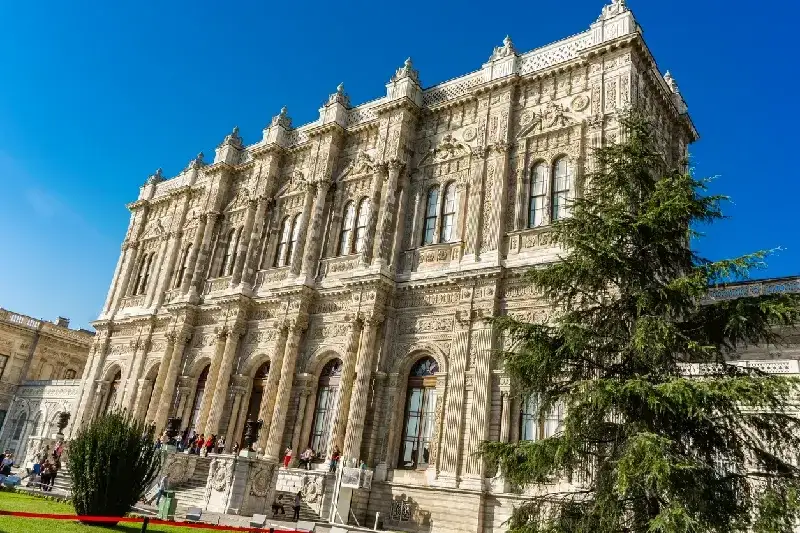
Dolmabahçe Palace was built between 1843 and 1856 under Sultan Abdülmecid I to modernize the Ottoman court in a more European style. Located along the Bosphorus, it replaced Topkapi Palace as the empire’s administrative center and hosted many significant events in Ottoman and early Republican history.


















































